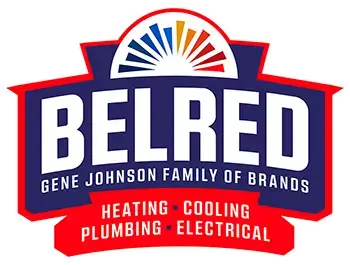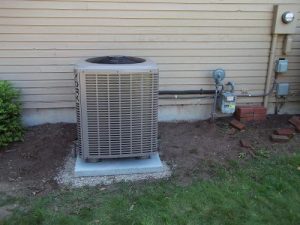When it comes to keeping your home comfortable during the warm summer months, selecting the right size air conditioning (AC) unit is crucial.
An undersized unit will struggle to cool your home efficiently.
On the other hand, an oversized unit will cycle on and off too frequently, leading to higher energy costs and a shortened lifespan.
In this article, we’ll guide you through the process of determining the correct AC unit size for your home.
We’ll also discuss other factors that must be taken into account like climate and insulation and explain key terms like BTUs and SEER ratings.
By the end, you’ll be equipped with the knowledge to make an informed decision and save money on air conditioning!
Need help looking for the right size AC unit for your space? Reach out to us today to make an appointment.
What Size AC Unit Do I Need?
The first step in choosing the right size AC unit for your home is determining your home’s square footage.
Generally, you can find this information on your property tax statement, real estate listing, or by measuring the length and width of each room and adding the areas together.
Once you have the total square footage, use the following guideline to estimate the cooling capacity needed:
| Home Size (sq. ft.) | AC Size (BTUs) | AC Size (Tons) |
| 700-1,000 | 18,000 | 1.5 |
| 1,000-1,200 | 21,000 | 1.75 |
| 1,200-1,400 | 23,000 | 1.92 |
| 1,400-1,600 | 24,000 | 2 |
| 1,600-1,800 | 27,000 | 2.25 |
| 1,800-2,000 | 30,000 | 2.5 |
| 2,000-2,200 | 33,000 | 2.75 |
Keep in mind that these estimates are a starting point and may need to be adjusted based on other factors.
How to Calculate Room Square Footage
Calculating the square footage of a room can help you select the right size AC unit. This simple guide will help you accurately measure and calculate your room’s square footage in a few easy steps.
Step 1: Gather the Necessary Tools
To measure and calculate the square footage of a room, you’ll need the following tools:
- A tape measure (ideally, one that measures in feet)
- A notepad and pen or pencil
- A calculator (optional)
Step 2: Measure the Length and Width of the Room
Begin by measuring the length of the room. Choose one wall and measure its length from one corner to the other. Be sure to record this measurement in feet on your notepad.
Next, measure the width of the room by measuring the length of the wall perpendicular to the one you previously measured. Again, record this measurement in feet on your notepad.
If your room has an irregular shape, divide it into smaller rectangles, squares, or triangles, and measure the length and width of each section separately.
Step 3: Calculate the Square Footage
To calculate the square footage of a rectangular or square room, simply multiply the length by the width. For example, if your room is 10 feet long and 12 feet wide, the square footage would be 120 square feet (10 x 12 = 120).
If you’ve divided an irregularly shaped room into smaller sections, calculate the square footage of each section separately, then add the results together to find the total square footage.
For triangular sections, multiply the base by the height and divide by 2.
Step 4: Double-Check Your Measurements and Calculations
To ensure accuracy, double-check your measurements and calculations. If you find any discrepancies, re-measure and recalculate as needed.
Adjusting for Climate, Insulation, and Other Factors
Several factors can affect what size AC unit you need for your home or business. These factors may include:
Climate
If you live in a particularly hot or humid region, you may need a larger unit to adequately cool your home. In hotter climates, add 10% to the BTU estimate for every 5°F above 85°F your area’s average summer temperature is. Conversely, reduce the BTU estimate by 10% for every 5°F below 85°F in milder climates.
Ceiling Height
Higher ceilings require more cooling capacity, as the additional air volume must be cooled. For rooms with ceilings higher than 8 feet, increase the BTU estimate by 20% for every additional 2 feet of ceiling height.
Heat-Generating Appliances
Ovens, dryers, and other appliances that produce heat can increase the demand for your AC system. If your kitchen is included in the area to be cooled, add 4,000 BTUs to the overall estimate to account for the heat generated by cooking.
Home Facade
Dark-colored exteriors absorb more heat, requiring a larger AC unit to compensate. If your home has a dark exterior, add 10% to the BTU estimate.
Insulation
Well-insulated homes require less cooling capacity, while poorly insulated homes may need a larger unit. If your home is well-insulated, reduce the BTU estimate by 10-20%. If your home is poorly insulated, increase the estimate by 10-20%.
Sun Exposure
The amount and direction of sunlight your home receives can impact the size of the AC unit needed. For rooms with significant sun exposure, increase the BTU estimate by 10%. For rooms with little or no direct sunlight, decrease the estimate by 10%.
Windows
Large windows, especially those facing south or west, can let in a lot of heat, increasing the cooling capacity needed. For rooms with large windows, add 1,000 BTUs for every 10 square feet of window area.
By considering these factors, you can ensure that your AC system operates efficiently, providing optimal comfort while minimizing energy costs.
Understanding BTUs and SEER Ratings
To make an informed decision when selecting an AC unit, it’s essential to understand BTUs and SEER ratings. These measurements help you determine the cooling capacity and energy efficiency of an air conditioning system.
BTUs (British Thermal Units)
BTUs, or British Thermal Units, measure the cooling capacity of an air conditioner. When selecting an AC unit, it’s important to choose one with enough BTUs to adequately cool your home.
A unit with too few BTUs will struggle to cool your home efficiently. Meanwhile, a unit with too many BTUs may cycle on and off too frequently, causing higher energy costs and a shortened lifespan.
Consult with an HVAC professional if you’re unsure about the right BTU rating for your needs. Call BelRed today at (855) 345-6161 to book an appointment.
SEER Ratings (Seasonal Energy Efficiency Ratio)
SEER, or Seasonal Energy Efficiency Ratio, measures the energy efficiency of an AC unit. A higher SEER rating indicates a more energy-efficient system, which can save you money on energy bills in the long run.
In the United States, the minimum SEER rating for new air conditioning systems is 13 or 14, depending on the region. However, it’s not uncommon to find units with SEER ratings of 20 or higher.
When selecting an AC unit, look for one with a high SEER rating to maximize energy efficiency and minimize long-term energy costs. While units with higher SEER ratings may have a higher upfront cost, the energy savings over time can offset the initial investment.
Guidelines for Choosing the Right Size AC Unit
Finding the right size AC unit for your home can be overwhelming, but with a few practical tips and tricks, you can make the process simpler and more efficient.
Here are some suggestions to help you choose the correct AC size:
Use an Online AC Sizing Calculator
Several online tools, like AC sizing calculators, can help you estimate the appropriate cooling capacity for your home.
These calculators take factors like square footage, insulation, and climate into account, providing you with a BTU estimate.
Keep in mind that these calculators are only a starting point and may not consider all specific factors unique to your home.
If you want more accurate advice, contact a professional HVAC technician.
Consult with a Professional HVAC Technician
Although online tools can be helpful, consulting with a professional HVAC technician is the best way to ensure you choose the right size AC unit for your home.
A technician can perform a thorough assessment of your home, considering factors like ceiling height, window size, and heat-generating appliances.
They can also provide personalized recommendations based on your home’s unique needs and help you understand the balance between BTUs and SEER ratings.
Get Multiple Quotes and Opinions
When choosing an AC unit, it’s a good idea to get quotes and opinions from multiple HVAC professionals.
This will help you compare prices, services, and recommendations, ensuring you make the most informed decision.
Be cautious of quotes that seem too low, as they may indicate subpar work or an undersized unit.
Remember that choosing the right size AC unit is essential for maintaining comfort and minimizing energy costs in the long run.
For reliable and accessible services, contact BelRed today at (855) 345-6161.
Choosing the Right Size AC Unit
Selecting the right size AC unit for your home is essential for maintaining comfort and minimizing energy costs.
By determining your home’s square footage and considering factors such as climate, insulation, and sun exposure, you can accurately estimate the cooling capacity needed for your home.
Understanding BTUs and SEER ratings will also help you choose an efficient unit that meets your cooling needs.
If you’re ever unsure about the right AC unit size for your home, consult with a professional HVAC technician for guidance.
Trust BelRed for All Your Cooling and Heating Needs!
Are you tired of dealing with an inefficient or unreliable cooling or heating system? There’s no need to suffer through the heat any longer!
BelRed is here to provide you with the highest quality AC Installation, Repair & Services. Our team of skilled technicians is committed to keeping your home cool and comfortable all summer long.
Call us at (855) 345-6161 or leave us a message to book an appointment.







